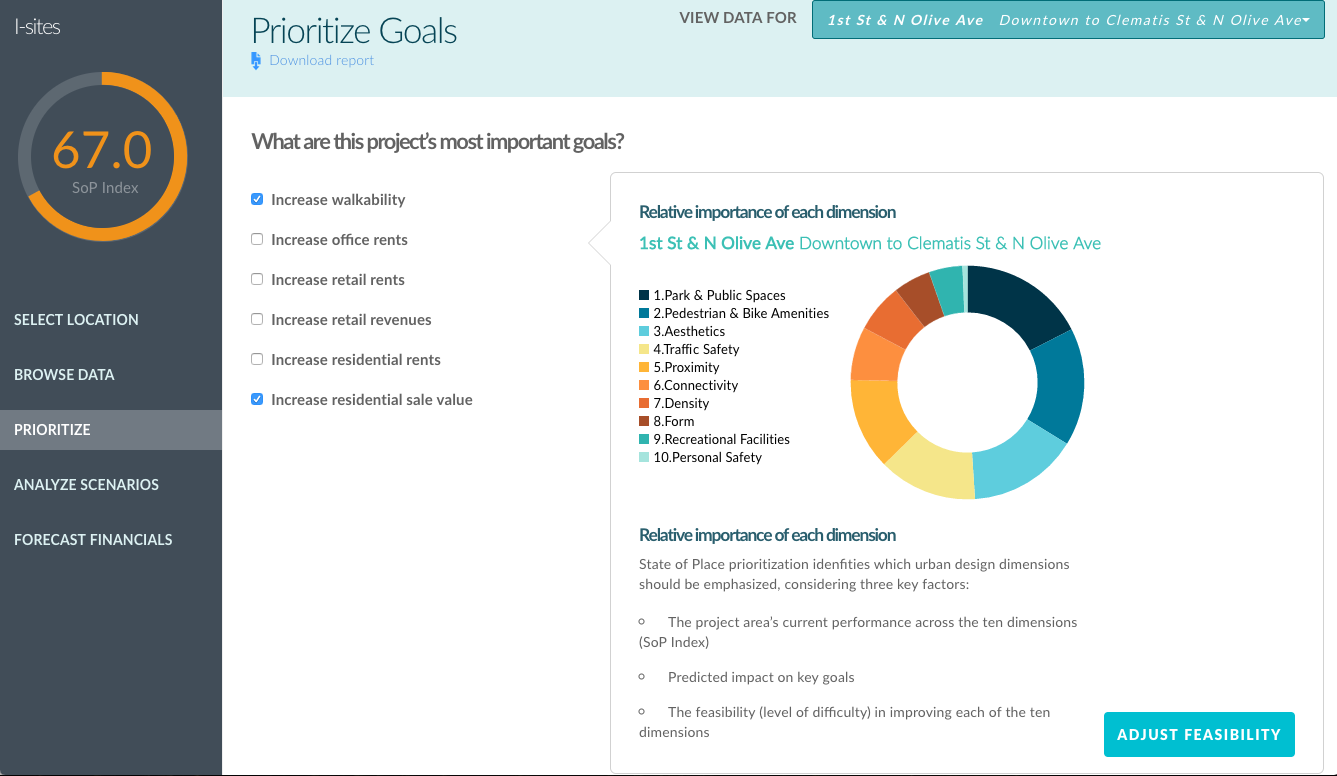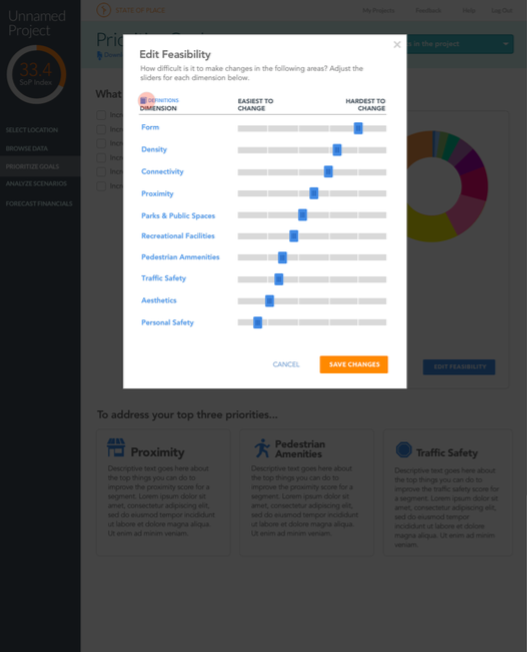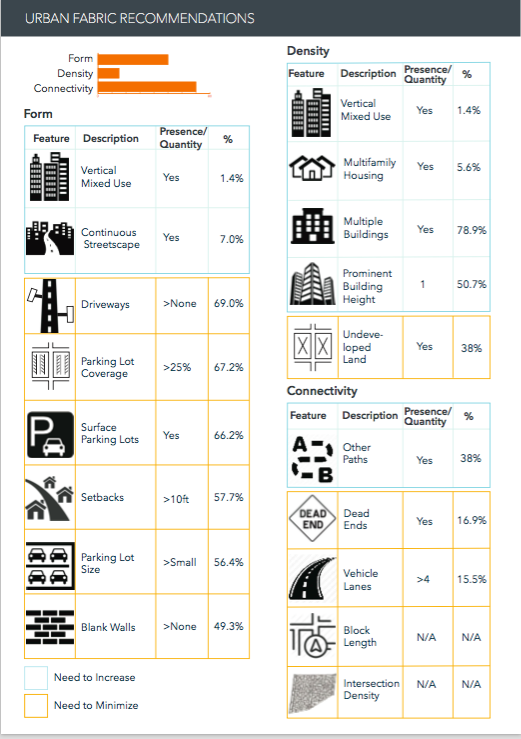Actually...Many Roads (Sidewalks?) Lead to Rome...
What are the top five things I can do to boost walkability?
I get asked a version of this question a LOT. Like, ALL. THE. TIME.
I get it. It's the Twitter era (nope, not going there...). 140 characters or bust. People want easy answers, simple solutions, soundbite fixes - even when the problems are complex...especially when they're complex. Nuance? Details? Qualifiers? That's for academics (yeah, no kidding!). This is why articles like "4 ways to make a city more walkable" and "7 simple ways to make every city friendlier for pedestrians" and "walkability checklists" are such effective click-bait (and yes, why we used a similar title as the subject of this week's newsletter. Sorry!)
But can you really create a formula for walkability, livability, great places?
And isn't State of Place doing just that by quantifying what people love about places?
Walkability comes in many shapes and sizes. A solution that's right for one community may or may not be right for another one. Now, that's not to say that articles that provide lists of the top X ways to make a community walkable are not helpful. They're a nice primer on good urban design and as long as they're not taken as gospel, they're fun and harmless. BUT, the issue is that these generic "platitudes" are often not far from what cities are paying consulting firms tens of thousands of dollars to produce. If you compare the mostly top-down recommendations generated for say Des Moines or Buffalo or Salt Lake City - they often don't differ all that much from each other...Add or widen sidewalks. Remove at-grade parking. Narrow the roads. That's not to say that these things aren't indeed characteristics of good urban design. But really? All these communities, with such varying strengths and weaknesses, and remarkable differences in context, they all need the same ingredients to suddenly become great, walkable places?
Just Get Me the Antidote, Now!
You'd never expect to have a doctor dispense the same Rx to ten patients who come in with symptoms of the classic cold. She would examine each patient's history: consider their age, sex, race, ethnicity, the severity of their symptoms, the presence of other symptoms or comorbidities, and what their insurance covers. She'd then offer a diagnosis and present a prescription or prognosis. Cities are just as complex - or more so - than humans. Cities deserve an equally bottom-up, contextual approach. There is NO formula or silver bullet for making places more walkable and livable.
While State of Place offers a data-driven, evidence-based approach, our answer to: "what are the three top things I can do to make my neighborhood more walkable?" will never be prescriptive or formulaic. And so I apologize in advance for my frustrating, not quite conveniently compact (and yet below 140 character count ;)) response - it depends.
To answer the questions we posed in the beginning:
There are no top 3 things, no top 10 things, no top whatever.
There is no formula.
And no, State of Place is demonstrably not a formula.
For one, you don't need all 290+ urban design features we measure to get a perfect score. And even then, the State of Place Index (the result of aggregating all of those 290+ features into a score from 0 to 100) is broken down into ten urban design dimensions - the State of Place Place Profile - which gives communities a diagnosis of their assets and needs. But Mariela, you said there were no top ten anything. True, but we do know, empirically (based on over 15+ years of research and meta-analyses of over 70 studies) that there are ten urban design dimensions that are tied to more physical activity and walking.
What Do YOU Want to Be (When You Grow Up)?



That said, which one of those features is most important for each community That's what depends! And indeed, that's what our software takes into account when generating urban design priorities for communities - well, why do you want to make your neighborhood more walkable (what objectives do you want to achieve), where are you starting from, what will it cost, and what ROI will different solutions produce? Not only will this type of contextual approach result in plan that is much more likely to succeed, it will identify the plan that's most cost-efficient, AND it will actually give you the ammunition (numbers) you need to get that plan approved (because you know those formulaic plans cities ended up paying so much for, yeah, they often end up collecting dust precisely because they lack a contextual, data-driven rationale for why they should be implemented to begin with). If you'd like your own, non-cookie cutter, data-driven, yet customized approach, that will also help your plans get approved and funded, faster and affordably, please reach out to us anytime!
Ok fine, if you're still itching for a top X list, you can take a look at our ten dimensions below!

